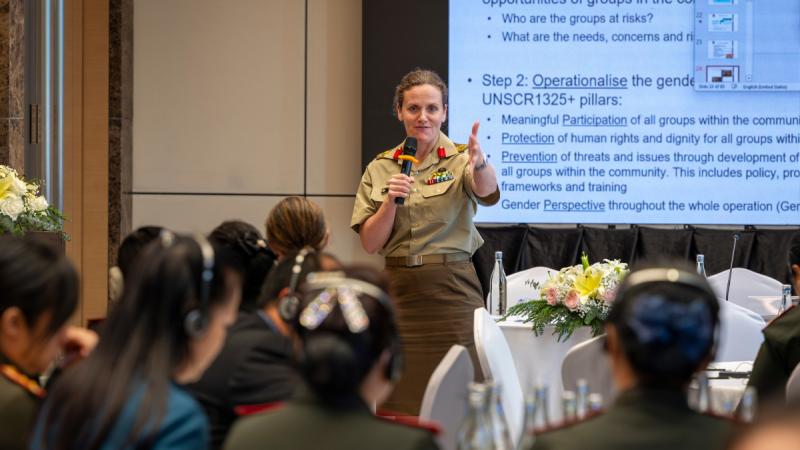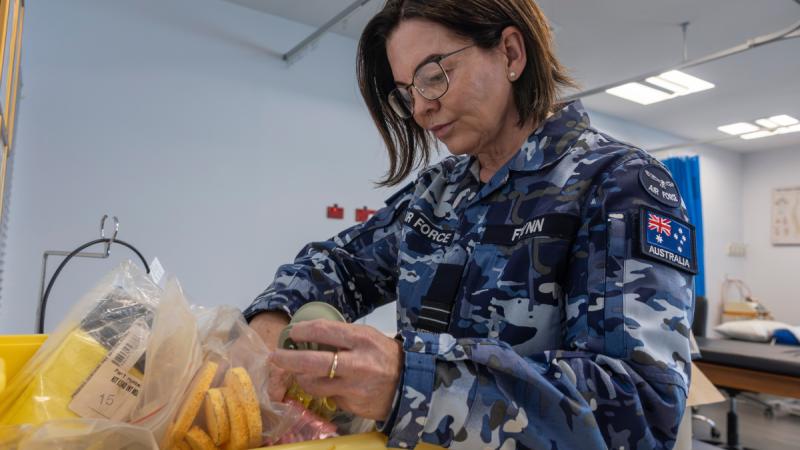28 July 2025
As dawn broke over Shoalwater Bay, the Combined Task Group 628.1 waited in various landing crafts ready to assault the beach.
The battle group comprised of the Australian Amphibious Force working alongside navies and marines from the Republic of Korea, the US and France, and marines from the Japan Ground Self-Defense Force.
They worked on amphibious platforms ROKS Marado, and HMA Ships Canberra and Choules, supported by their escort group of USS Higgins, ROKS Wang Geon and FSS Vendemiaire.
Forty-eight hours prior to the main assault, a joint pre-landing force was deployed to secure the beach, with personnel from French Armed Forces 21st Marine Infantry Battalion and Australian Army 2nd Battalion, the Royal Australian Regiment, working together to clear the beach for the main assault waves.
Commander Australian Task Force Captain Chris Doherty, of the Royal Australian Navy, said the joint pre-landing force conducted shaping operations in the amphibious objective area in preparation for the assault, supported by the combined maritime force.
“What we can expect is that [the maritime force] will support the soldiers ashore, whilst they carry out their mission to clear the enemy forces out of the area,” Captain Doherty said.
“In support of our amphibious operations, we have an escort force consisting of a US destroyer, a Korean destroyer and a French frigate, which are conducting operations at sea to ensure that our amphibious ships are safe while projecting our land forces ashore.”
Commander Landing Forces Colonel Judd Finger said Talisman Sabre was all about the international community forging close operational partnerships to ensure seamless interoperability in the future, whatever it may hold.
“We conducted a joint forcible entry operation of up to a thousand troops by air assault; rotary wing operations by surface assault using amphibious armoured vehicles and landing craft; and complex land operations alongside our Republic of Korea partners with combined arms fighting systems to fight enemy forces ashore,” Colonel Finger said.
One essential part of the assault was the ground combat element made up of about 350 personnel from 1st Battalion, the Royal Australian Regiment (1RAR).
'Amphibious operations is a unique and complex environment and there are a number of challenges, especially in battlespace coordination.'
Commanding Officer 1RAR Lieutenant Colonel Ben Farrell said this was quite a large multinational exercise for his battlegroup.
“We’ve got a Japanese marine platoon embedded in with our Bravo company, and we also have given up one of our platoons to be embedded in the Japanese amphibious force, and a platoon to be embedded with the Republic of Korean amphibious force,” Lieutenant Colonel Farrell said.
1RAR has the role of securing the beachhead, then setting the conditions for the Republic of Korea marine battalion to push forward and seize Sam Hill Airfield in Shoalwater Bay.
“Our task, when we disembark, is to clear a path for allied forces, a clear route and clear any threats that might be in a certain range from the landing areas on the beach,” Lieutenant Colonel Farrell said.
"Amphibious operations is a unique and complex environment and there are a number of challenges, especially in battlespace coordination."
Other elements, including 3rd Regiment, Royal Australian Engineers and a Logistic Combat Element, as well as specialists such as Joint Fires and Effects, supported the infantry company from 1RAR.
Captain Samuel Cox, of 4th Regiment, Royal Australian Artillery, said in his role as a joint fires team commander he brings a certain expertise and specialty, along with his team, to support 1RAR to conduct joint fires and effects liaison and coordination in support of their manoeuvre.
“Joint fires and effects is the term to describe all assets that can be brought to bear against the enemy or to shape them,” Caption Cox said.
“This can be in a kinetic sense including field artillery, naval gunfire support, fixed or rotary wing attack aviation or non-kinetic effects such as information warfare and electronic warfare.
“Amphibious operations is a unique and complex environment and there are a number of challenges, especially in battlespace coordination, that we don’t get doing conventional out-field trips.
“This has been a really good opportunity to test the coordination and the command element in order to ensure that fires are prosecuted deliberately and also with the minimum of delay.”


